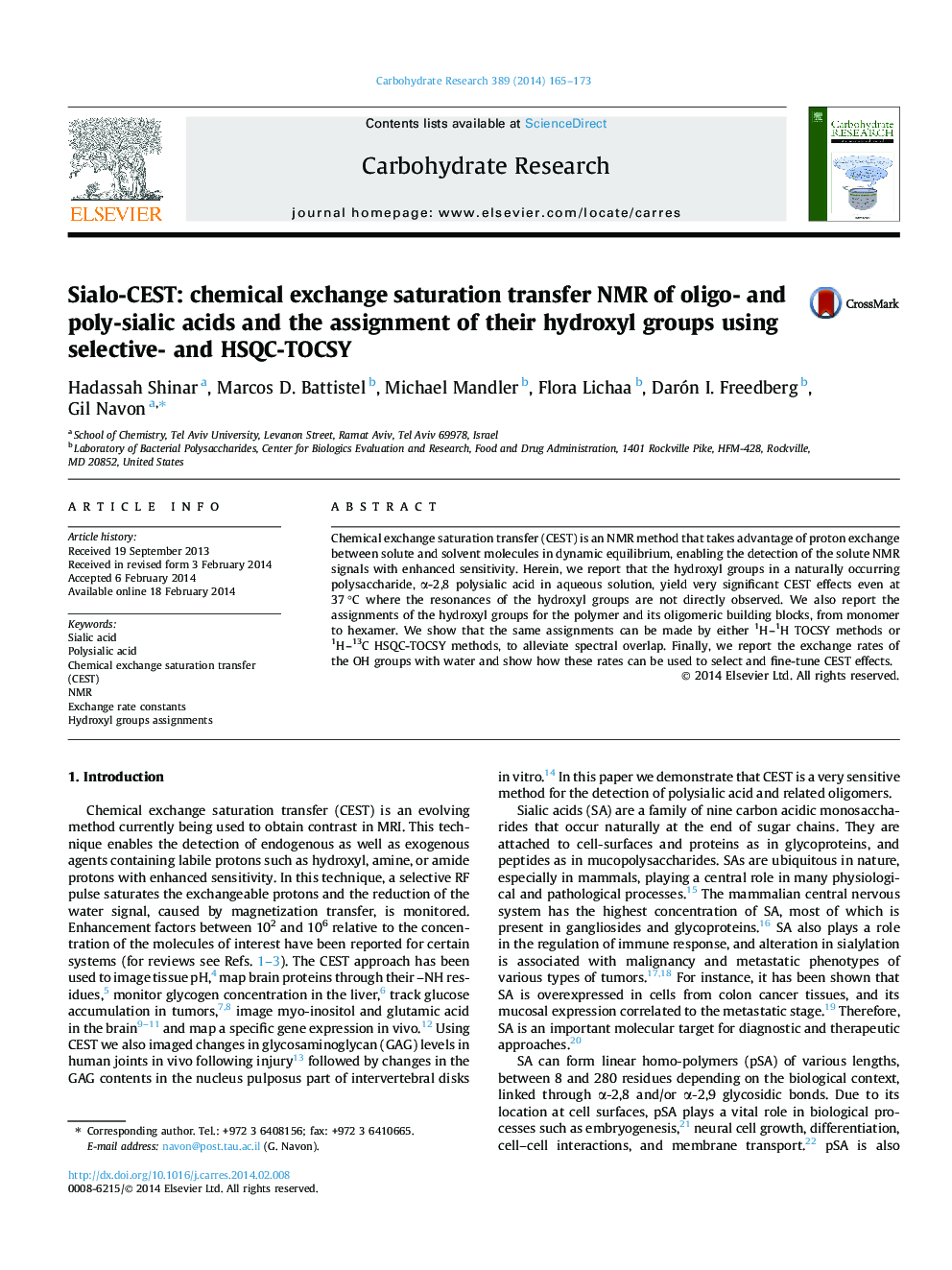| Article ID | Journal | Published Year | Pages | File Type |
|---|---|---|---|---|
| 1387668 | Carbohydrate Research | 2014 | 9 Pages |
•Sialic acid and polysialic acid exhibit significant CEST effects.•Invisible hydroxyl groups in polysialic acid are observed using CEST.•NMR hydroxyl peak assignments for polymers and oligomers of sialic acid.•Exchange rates of hydroxyl groups in polysialic acid were estimated.
Chemical exchange saturation transfer (CEST) is an NMR method that takes advantage of proton exchange between solute and solvent molecules in dynamic equilibrium, enabling the detection of the solute NMR signals with enhanced sensitivity. Herein, we report that the hydroxyl groups in a naturally occurring polysaccharide, α-2,8 polysialic acid in aqueous solution, yield very significant CEST effects even at 37 °C where the resonances of the hydroxyl groups are not directly observed. We also report the assignments of the hydroxyl groups for the polymer and its oligomeric building blocks, from monomer to hexamer. We show that the same assignments can be made by either 1H–1H TOCSY methods or 1H–13C HSQC-TOCSY methods, to alleviate spectral overlap. Finally, we report the exchange rates of the OH groups with water and show how these rates can be used to select and fine-tune CEST effects.
Graphical abstractFigure optionsDownload full-size imageDownload as PowerPoint slide
